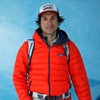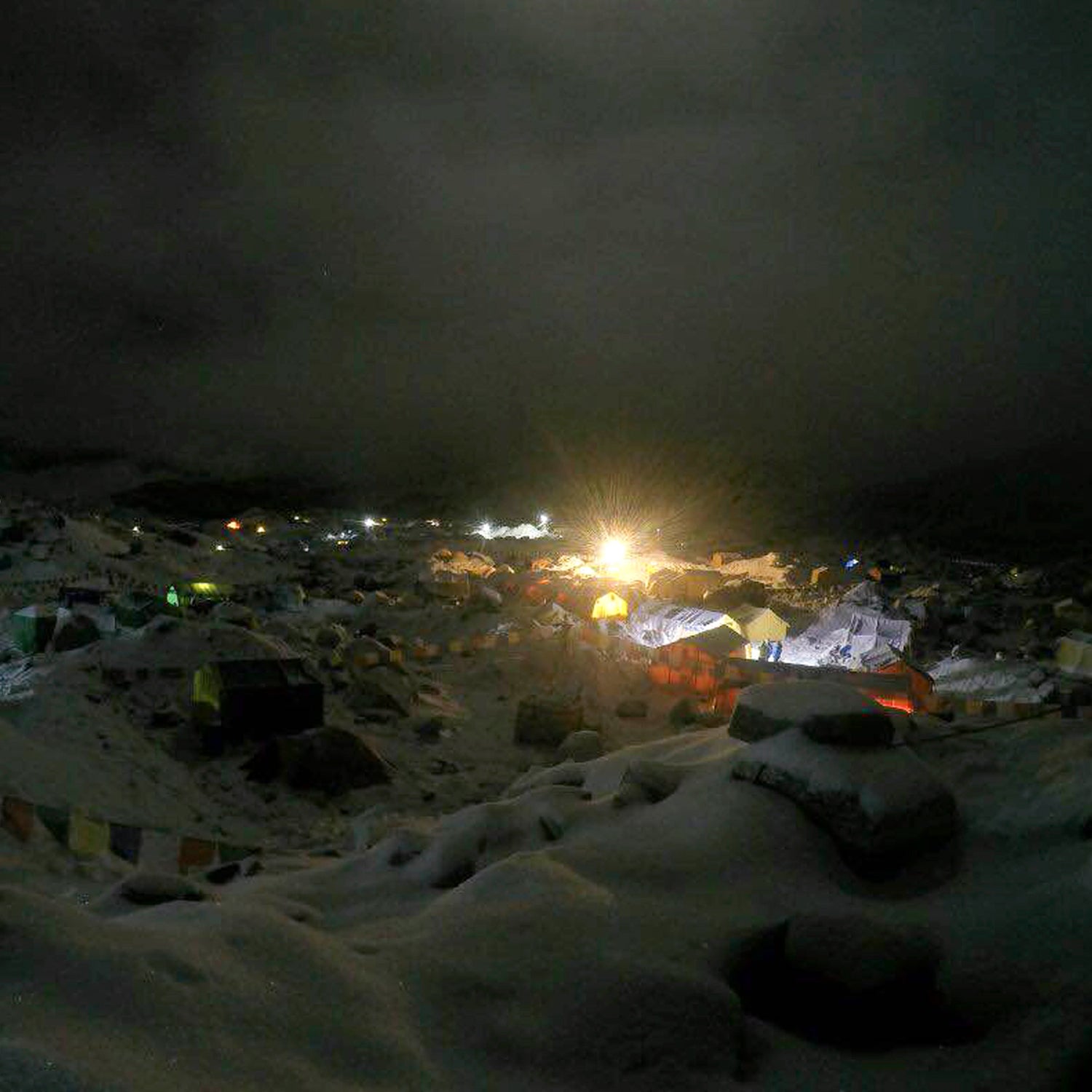American Ben Ayers was on business in Chaurikharka, one of the villages below Lukla, in Nepal, when the April 25 earthquake hit. The building that he was in collapsed around him, but he emerged unharmed.
´ˇ˛â±đ°ů˛őĚý´Ú´ÇłÜ˛Ô»ĺ±đ»ĺ , one of the first organizations to advocate for trekking porters' rights in the country, and has been living there for 15 years.* He's also the Nepal county director of the development organization . Since the quake, he has been in Lukla, triaging Everest victims who have been arriving via helicopter from Pheriche, a town about seven miles downhill from Everest Base Camp that has acted as a staging area for the critically injured and walking wounded.
On Saturday, Ayers made it back to his home in Kathmandu. He's says it's a wreck, and he is now sleeping in a tent on his front lawn. Despite the devastation, he was able to take a taxi home from the airport—the roads are open and parts of the city infrastructure are functioning, he says. But his neighborhood is currently “a refugee camp” and “every piece of grass has got a tent” on it, he says. “Everyone's too freaked out to go inside.”
On a cell phone call on April 26, Ayers took a moment to fill in şÚÁĎłÔąĎÍř as to the state of the destruction in Kathmandu and on Everest.
OUTSIDE: Can you describe the scene of helicopters coming in and out of Everest Base Camp?
AYERS: They were bringing bodies and injured [people] down from Base Camp to Pheriche because the weather was keeping them from getting all the way down to Lukla. The Mi-17 [Russian helicopter] showed up with three loads of 15, 18, and 22 victims and we were just triaging.
Base Camp was Armageddon. I flew this medevac back to Kathmandu. I spent a long time talking to an Irish guy who was on a Jagged Globe expedition there, and he described the avalanche and the seen at Base Camp and it just sounded absolutely hellish.
What were the conditions of the people you triaged?
It varied. We had a few casualties. We had people who, for all intents and purposes, seemed OK—a little beat up. But by and large it was like a war zone. People were really, really messed up. Tons of fractures. A lot of pelvic and back issues. A lot of head trauma. Severe trauma.
Did you recognize any of the victims?
There was nobody that I recognized. But we moved more than 60 people through there yesterday. There were a lot of Chinese, a lot of Nepalese obviously. But it was such a blur I didn’t have a chance to stop and talk with anybody.
Which villages up there have been hit hard?
Thame has been hit very hard.  I’ve heard that Khumjung also.  As I mentioned, Chaurikharka is pretty wiped out and Ghat is also wiped out. Farther out, I’m not sure. I think Langtang is completely wiped out. There’s a lot of destruction, there’s a lot of buildings destroyed but each village has a handful of people who died at the most.
Lukla’s fine. It’s strange. Like, Chaurikharka which is just like 15 minutes south of Lukla was devastated. The house we were in basically fell around us.
Can you tell us more about the scene in Lukla?
The scene in Lukla is quite sane—kind of business as usual. In Chaurikharka, the whole village crumbled and the community was in shock. But in Lukla, people are going about their daily business in sort of this Nepali way of just moving on with things. There was that big aftershock yesterday and that freaked people out, but now it's the same old. It's full of tourists.
There are climbers on Everest whose families back home are worried because they haven't heard from them. What's your sense of what we will find in the coming days?
For Mom and Dad whose son or daughter is backpacking in the Khumbu, the chances are overwhelming that they’re fine, they just haven’t been able to communicate yet. They'll do so when they get down to Lukla.
A lot of people outside of Nepal who want to help are talking about writing checks or coming to help with relief. Are those good ideas?
People want to get involved and that's a great thing. Writing a check now will help, but supplies are only useful when there's the coordination to distribute them. The real challenge is going to be long-term reconstruction. There's a balance. I want to encourage donors to act now, but caution them to take things slowly, work with organizations able to make that long-term commitment, and to avoid emotional knee-jerk reactions.**Â
The dZi Foundation is accepting donations for long-term reconstruction efforts. Go to to contribute.
*Due to an editing error, the original version of this story did not clearly represent the views of Ayers.
**This sentence has been updated to better characterize Ayers.


